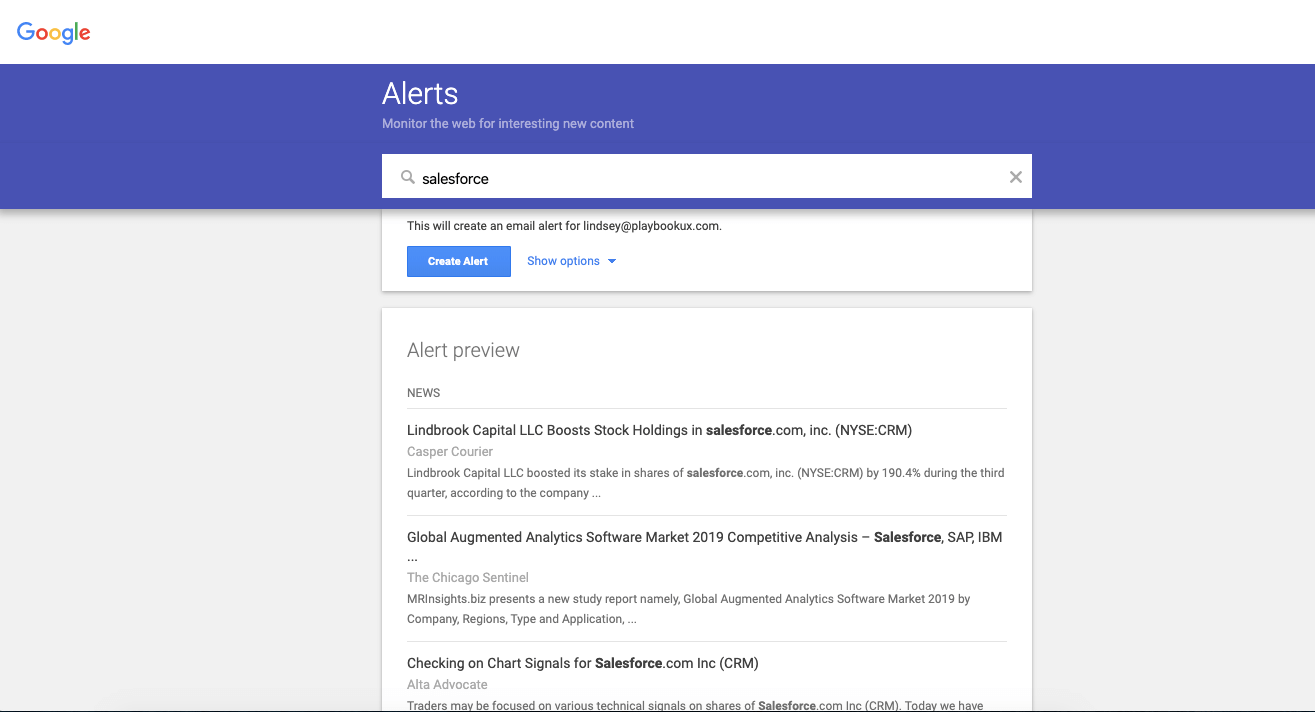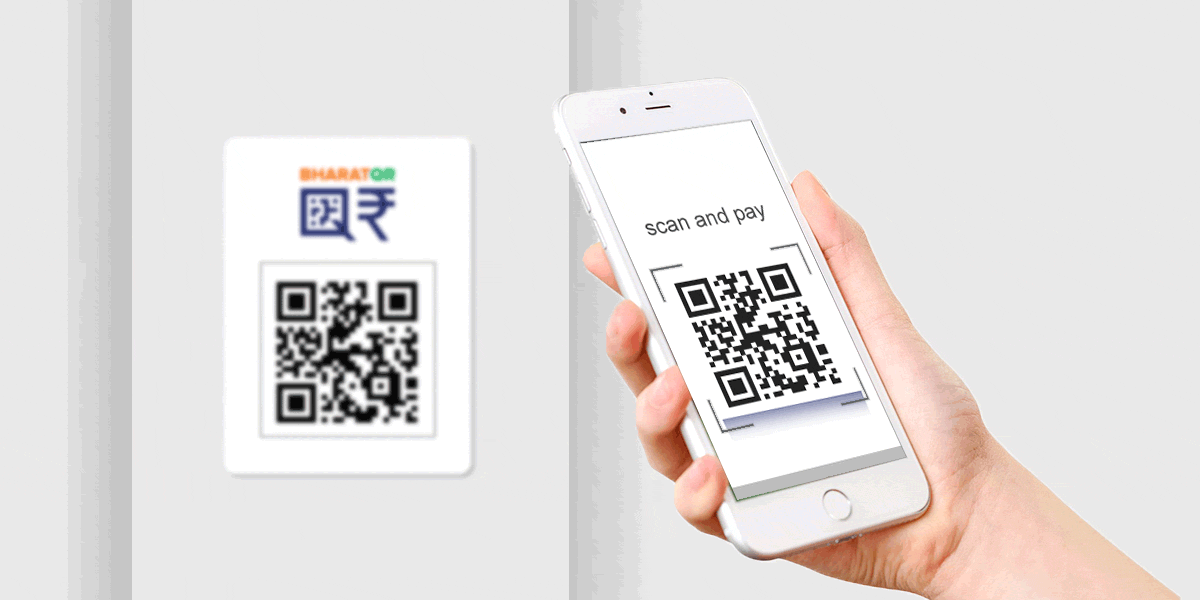Essential Guide: The Top Ways to Get Customer Feedback

What is customer feedback?
Why do some companies perform well every year? It’s because they understand how important it is to listen to the voice of their clients. They believe in the power of customer feedback. To you and me, this is any information provided by current and/or prospective customers in relation to their satisfaction with your products, company and service. Any business who places value on gathering continual feedback from their customers can always make sure that their needs are catered for. And when this happens, customers stay with a brand.
Do you know how to ask for feedback from customers? If you don’t, stay with us. If you do, stay anyway and you might learn something new. We promise you that our guide will show you how to gather various types of feedback. Some of them like surveys or focus groups will be prompted by you. Others such as reviews or tweets will be driven by customers so that you can look through the internet and find out what customers think about every other product out there. Cannot wait to find out more?
But, hold up. Before we get into the various ways to collect customer feedback, you need to understand why. What are the benefits of customer feedback and how can it become a gold mine for your product?
Why collect customer feedback?
Understand how you can improve
Businesses usually have some idea of what customers needed before introducing a new product or service to a market. At this point, you might have already sourced initial customer feedback through market research. This could have indicated whether a customer might buy your product or service based on other products similar to yours.
However, it is only once you ask for customer feedback on your own product that you will understand how well your product works and how you can make the experience even better for customers. One of the benefits of customer feedback is that these customer opinions will help you improve your end product in line with their expectations, even if they change over time. In this way, you can resolve their issues and fulfill their ultimate needs.
Eliminate “guessing” and making assumptions about what your customers want
Do you want to be a product superhero? Customer feedback will give you this power as you will learn what your customers do and don’t like. This information will prevent you from making assumptions about what you feel your customers need. Instead, it will encourage you to listen and implement better solutions for their specific requirements after they provide you with their opinions on your product. After you stop guessing a customer’s wants and start implementing what they need, you will also showcase that you are listening to them and will prevent them from looking for a competitor’s product.
Beat competitors
No company is invincible. So, as well as utilizing customer feedback to understand your product’s own strengths and weaknesses, you can also use the information that is already on the internet to learn about how they serve customers in your information. Tools such as social media, reviews as well as the websites of competitors can help you gather insights into what customers think of their brand. If some of this feedback is negative, it will help you understand how you can make your product better so as to avoid these pitfalls. In this way, your product will help you rightfully steal their customers and eventually help you overtake your competitor’s market share.

Remember that a customer does not necessarily care whether you are the biggest player in your niche; they just want you to solve their problem. And if your competitor isn’t, then you can.
When scanning for valuable information about your competitors, you need to ask yourself how you can stand out from the competition and whether you can improve the quality of your product and service to deliver better results for customers.
Understand feature requests to guide your product roadmap (what to build first)
Customer feedback is valuable at every stage of your product development cycle. Most businesses, when developing a new product, need to know what to build first so that they can get a return on their investment (ROI). This profit can then be invested into other business areas so as to build a bigger, better product for their customers.
But how do you know what to build first? Here’s another benefit of customer feedback as a customer’s opinion can help you understand what you need to build first. You could get this feedback by giving current or prospective customers control of your product roadmap through using a dashboard system like Trello. You could start by detailing features of the product that you are working on as well as features that are in the pipeline. You would then need to actively approach customers to encourage them to feedback on these requests. If they are having any issues with any of the features, they could post a comment which would then be answered by a product manager.
What about polls? Initiating these on this dashboard could allow customers to prioritize features in terms of need and priority. In this way, a customer will understand that you are putting them at the centre of your company.
Make quick changes to better serve your customers
If your customers are kept satisfied and have a reason to be loyal, your company will continue to do financially well. Listening to a customer’s needs is one thing but actually acting on those words is where a majority of businesses fail. But, you can be the change.
No one likes being told that their product is not perfect. It’s no surprise that a lot of thinking goes into a new product before it is released on the market. One more benefit of asking a customer continually for feedback through internal polls or surveys is that you can control any negative reviews. If there is feature that does not work or a bug on your website, you then solve this issue internally without any negative publicity.
Why is this? If customers are used to providing you with their opinions which they know, you as a business will act on, they will come to you with any problems first.
Within your organization, who uses customer feedback?
Product Management
Quality customer feedback will always be important to product managers who looking to build on the business strategy. For instance, if a product manager collects customer feedback on a landing page, they would be armed with information to improve their onboarding systems. This in turn would help them get more sales and improve customer loyalty. Encourage your product managers to develop processes to ensure that they get customer feedback on a regular basis. In this way, they can build a continual feedback loop and so will be able to better understand what is vital to customers.
Marketing & sales
What do you rely on when looking to buy a product you’ve never used before?
Case studies. A marketing department’s gold dust.
A testimonial is even better. Case studies combined with testimonials from real individuals are even stronger as there is a better likelihood that this is a real customer who was satisfied with your product. Testimonials, case studies and reviews are customer feedback examples that can act as social proof to show customers why you are the best product option. This proof can increase conversations, credibility and sales.
Leadership & executives
A good leader can use customer feedback to not only transform the business but also to encourage customer-focused initiatives. It’s about listening to what has gone wrong, thinking about what you can do to make it better and then implementing procedures to put things right. If there is a customer-based change that is worth implementing, remember to feed this back to the customer once done. It is important for customers to feel that they are driving change and success for your business.
Customer support
A powerful customer support team can convert prospective customers into current ones while also helping retain brand loyalty. Good customer feedback will indicate what matters most to your customers and will detail what your support team needs to do in order to deliver it. Perhaps, a shortcoming of your team is product knowledge as feedback from your customers has indicated that your support team hasn’t always answers their question. Your action following this, we hope, would be to take measures to improve the knowledge of your brand within your support team.

How would you begin improving this? A little completion has never hurt anyone. You could tell your support team that if they manage to solve a customer’s issue and then get positive feedback to confirm this, they will get a bonus for that month. In time, it would then become natural for your support team to make sure that their knowledge about your brand is up to date after the rewards for good behavior for a month. In this way, you will start creating a positive feedback loop that will continue to influence and motivate your support team through future transformations of your business.
Developers
If a customer lets you know about a feature of your product that isn’t working so well or indicates that your website could be more user-friendly, this customer feedback needs to be passed onto your developers. They can then understand how the product that they built functions in reality and can amend any features to suit a customer’s needs better.
Who should I collect feedback from?
Collect feedback from current customers
Collecting customer feedback from your current customers should be a continuous process to ensure that your customer’s needs are continually served. Using a form of chat support such as live chat or a chatbot can help your business get closer to resolving its customers’ needs and challenges quickly. Your support team, if this is done on a daily basis, might see patterns emerging which should give them details of any recurring issues. They could then collaborate with the developers at your business so as to develop long-term solutions for those issues. In this way, you can show that you are proactively solving customer problems.
Have an app that customers can download? Ask your customers to give you their opinions on this too. Use a CRM system that keeps a record of every customer who has signed up for the app. After 7 days of the app being downloaded, you could ask for a customer’s opinions by email. If there is anything wrong with the app, you can find out and improve it now before the criticism goes public.
Would you like a subscription service that will set up and manage your customer feedback studies? PlaybookUX can help you with this through our subscription plan that allows you to source an unlimited number of your own customers for an unmoderated study. A customer recruiting link will be created for you so that you can send this to your current customers so they can participate.
Collect feedback from prospective customers
There will be occasions where some future customers might just browse your product page after reading through one or more of your blogs. So how can you capture what they thought about your product?
Let’s get creative. After around 20 seconds of viewing the second blog post, use a pop up form to gather information on what they like and don’t like about your website and service so far. The entire purpose of this form is to make it really easy for our users to give us their feedback.
Still don’t know how to ask for prospective customer feedback? PlaybookUX could help you with this if you try our Participant Pool. All our participants are sourced from Facebook and LinkedIn and are verified by us. Plus, if for whatever reason we cannot find you a set of customers within your demographic, we will recruit these types of individuals for you for free.
Collect feedback from people who visit your website
There might be a lot of individuals visiting your website but which of these visitors would you need to target? Whose feedback would be the most useful for your business? You could start with return visitors who have viewed two pages or more on your website. They can be rewarded with a short survey asking open-ended questions. Open- ended questions tend to encourage more in-depth honest answers. It is useful to target visitors like these as by viewing more than one page on your website, they have demonstrated an interest in your product. It would be crazy to let them go and not making a potential sale in the future.
But it’s not just surveys that have to pop up. What about a feedback button as another customer feedback example? If you feel that any customers would need to be persuaded to provide feedback, you could give them a free eBook, guide or coupon in exchange for customer feedback. These types of customers are still undecided as to whether they want your product and do offering something like 20% off their first order might not be such a bad decision. If you want to get customer feedback following a purchase on your website, you have the best chances of doing immediately after it. Displaying a popup after finalizing the purchase can be a really effective way of encouraging a customer’s opinion.

People who stop using your product (customers who cancel their subscription)
It’s hard when a customer no longer wants to use your product or service. However, rather than simply letting them leave, you need to still grab this opportunity to ask them why they have chosen to leave. Their feedback could be the most important reason why your other customers might also chose to leave. To ensure that this customer feedback is received, source a CRM system that can automatically send them an email once they click unsubscribe. In this way, you could solve a potential emerging threat to your business before it gets bigger.
People who have never seen your product before but are in your target audience
You’ve just seen a negative review on your competitor’s website. What do you do? Do better than simply recording it or using it to make your product better. Get in touch with the aggrieved customer.
If you’ve found a blog comment, you need to click on the commentator’s name which will lead you to their social media profile. If you’ve found the negative comment on social media, get in contact with them and make them a better offer. This customer feedback example can give you an indirect way of reaching new customers and succeed where other have failed.
On the other hand, this might not be the best customer feedback option for you. Feel that you lack the resources to monitor negative reviews of your competitors continuously? Or would you like it if someone else did the heavy lifting for you in terms of finding new customers? Playbook UX are confident in helping you with this. We make it easy to find your target customer with 10 different demographic & employment filters such as age, gender, ethnicity, household income, location, job role, current work status, company size, industry and seniority. We do this by firstly verifying our testers through LinkedIn and then double-checking each and every one by hand so that you get the best participants.
What should I collect feedback about?
First impressions
You need to get things right the first time. Even though no organization wants to be judged on its past, most customers will form an opinion of your product based on their first impression. So, what can you do to make sure you win customers at the first look-see? Get customer feedback from someone who has never gone through your website. An example of customer feedback questions in relation to this could be asking them whether the look of the website feels current or outdated. You could also ask them for their feedback on whether it is easy to find the relevant information on your website and whether its content is accurate, clear and free of errors.
Brand perception
Every business needs to create and maintain a unique brand identity so that consumers feel that your business offers a better experience than most in your niche. If you fail to match a customer’s needs, you cannot build a relationship with them. They will simply look for another brand that does. So how do you keep on top of how your brand is perceived? Use Google alerts to gather customer feedback on your brand. All you need to do is tell Google what keywords you would like your business name of the competitor’s name. When those keywords appear online, Google will then send you an alert.
Competitor analysis
Google alerts can also be used to gather intelligence about your competitors. You must make sure, as a business that you are aware of why a customer might have used a competitor especially if they have switched to you. The customer feedback you should seek from new customers by email could include the reason why they were dissatisfied with their previous supplier for a product. You could also discover what a customer liked about their previous supplier so you could aim to beat that competitor with your offering.

Pricing
Are you pricing your product in line with market standards? How will you know that your price will encourage customers to buy your product? Asking for customer feedback on your pricing strategies will help you answer these questions. Start sourcing these responses from focus groups when your product is at the idea or development stage. Find out what more you need to do with your product if you want to charge customers more. In this way, your product has the best chance of surviving when on the market.
Website styling and navigation
Get direct access to critiques, ideas, and suggestions on your website style and navigation through customer feedback. Examples of customer feedback questions in relation to your website could include whether there are any errors on your website that need to be rectified or whether its colours or fonts make it easy to read. Take this feedback on board and look at ways that you can improve on style and navigation. When customers see these changes being made, they will become more loyal to you as yours is a brand that listens.
Product usability
Do you worry about confusing or misleading customers with your product? Try usability testing to see if individuals will be able to use your real product and whether they will want to continue using it. Through this form of customer feedback, users can give you an understanding of their thought process as they explore the features of your product. If they discover that something does not work well, you could receive recommendations on how your product can be improved. Your business could also use this process to talk about future features they hope to build into the product. In this way, you could receive initial feedback on whether these features are a good idea and if not, what you could be doing instead.
Satisfaction with the company’s product and support
I dare you to show me a business that doesn’t love positive customer feedback. After a customer has bought an initial product, no business should feel like they have done everything possible to keep a customer for life. Use an email system to send them a personalized follow-up message that encourages them to provide you with customer feedback on any positive or negative aspect of using your service. If they’ve had a great experience, you could respond back by email with a discounted offer to encourage them to buy more. If an experience has been negative, you could help solve their problem immediately rather than forcing them to leave their feedback in a forum where everyone can see.
Customer support
A better customer support system means happier, more satisfied customers. Your customer support team should aim to be your business’s hotbed of feedback as they are the first people who speak to your customers. Anything to improve your business models, standards or future features in the pipeline should come from the feedback received here. Your customer service team could encourage this feedback right after a support call or through a short survey by email. They could also, if encouraged, contact regular customers to ask for more detailed feedback on their experience.
When should I collect feedback?
When you come up with an idea (concept and idea testing)
The big risk is investing time, money and effort into an idea that nobody needs. Starting conversations with around 5 to 10 people, who you consider to be target customers, is the best way to collect feedback at the idea stage of your product. At this stage, any business should aim to ask open-ended questions that identify the problems that your product will try to solve.
When you design prototypes
Getting customer feedback at the beginning of your process of building your prototype will improve your design and resources as it will reduce the number of times you need to rework your product in order to make it a success. You might need to obtain customer feedback on more than one occasion, during this process, to continue to improve your prototype until you have a finished product. The type of questions you ask will depend on the relevant stage of your prototype. For instance, if you are designing a medium-fidelity prototype, you might be interested in asking the customer whether the navigation is user-friendly. However, at the previous stage, when building a low fidelity prototype, you would have asked basic questions such as whether the purpose of your product is clear. This is because, at the initial stage, your prototype still needed to be developed further.
When you code the actual product (usability and feature feedback)
Usability testing can help you get customer feedback while coding the product you have just built. It can pinpoint a user’s difficulties when using the features of your product. Before you start this type of testing, you would need to ask questions related to a user’s background, experience and demographics. While the product is being tested, you need to ask questions related to the tasks you prepared for users to test. If they did or did not complete a particular action, you need to find out why. Once the test has ended, you should ask these users about their experience with your product and what if any features you could introduce to make it better suited for real life. All your questions need to be simple, open-ended and clear.

When someone is on your website
When a customer visits your website, whether for the first-time or on a regular basis, you need to gather customer feedback data on their experience. In this way, you can tailor any changes you make to your website, in line with the different types of customers that could visit your website. Examples of customer feedback questions that you could ask include what their purpose was in visiting your website today and whether that goal was met. However, perhaps your website did not provide the answers they were looking for. You could then use surveys or polls that pop up on your website to get feedback on what you could do better. Is information on your website easy to find? It’s not nice when a customer must wade through pages before they finally get to the piece of information they are looking for. This could also be something that you choose to improve, following this feedback.
Immediately after customers put an order through or buy a product
Customers love to know that they have been heard. And why shouldn’t they? After all, their feedback should be the lifeline of your business. The next time a customer buys something, follow-up. Your email might be very helpful to them if they were unsure about how to use your product and had reservations about contacting you. You could also opt for a personalized note with the package that the customer is due to receive with the product. This could a website link that allows them to give initial feedback on your product. Your feedback email could also include a survey or poll that asks how they found the process of buying the product, whether there is any part of your service that could be improved and what initially compelled them to buy the product.
A month after they put an order through to see how using the product is going
Are you in contact with customers a month after they bought your product? You should be. Surprise this customer with a personalized email that talks about all the actions they could have completed with your product. This type of customer feedback example can also include a ‘how-to’ section on using your product that aims to details an issue they might be having in conjunction with a solution. Use this same email to advertise other similar products they might be interested in buying or any offers you might have. Use this opportunity to also include a link to subscribe to your newsletter so that you get the opportunity to receive more customer feedback from them in the future.
If they discontinue a subscription, get feedback after to see why they didn’t like
Don’t blame yourself when a customer chooses to leave your service. Feeling like this is not going to help anyone. Remember that losing a client is not a failure; treat it like an opportunity to grow. Your last email to them should aim to get this customer’s feedback on your service so that you can pinpoint why they left. Try and look for ways to resolve their issues so that they still leave with a positive view of your business. Use this time to look at the reasons for why this customer left you so as to reduce the risk of other clients’ doing the same as well as to improve the experience that your company offers.
Where and how should I collect customer feedback?
On my website
There are various tools that make it easier to collect customer feedback on your website. If you are looking for a user experience tool that uses multiple UX tools at once, opt for Hotjar which allows you to create extensive surveys for the customer to fill in as well as offering useful features such as heatmaps. But if you are looking for feedback analysis or reporting features, which Hotjar does not do, go for tools such as Kampyle which not only allows you to quickly create a feedback form, but also offers the opportunity to trace a customer’s experience at different locations on your website. That’s cool, don’t you think? So, if there’s something wrong with a specific page, your customer can tell you about it immediately. Kampyle also allows you to set a trigger for the feedback form to pop up on a customer’s screen if they are likely to leave a page. Not looking for a larger number of reporting options? Try Feedbackify which offers a much easier installation process for a feedback form on your website than most.
On social media platforms
Use your social media profiles to respond to customer feedback in a quicker, more efficient way. Monitor your customer mentions manually or through a social listening tool so you can keep an eye out for instances when your brand name is discussed on social media. You could also, if you were feeling strategic, monitor competitive mentions so that you could provide solutions for customers who are dissatisfied with competitors in your industry.

And the uses of social media don’t stop there. Another benefit of this type of customer feedback example is that you can use it to collect customer feedback on new products or features. One type of customer feedback example, in this instance, could be organizing a Twitter chat where you encourage customers to submit questions in relation to a new product to win a prize. In this way, you can not only reach regular customers but can also stimulate prospective interest from other target individuals.
Within a software
Worried about struggling with customer feedback methods on your own? PlaybookUX can make it easier for you with our affordable end-to-end user testing software. Our software uses artificial intelligence (AI) to gather useful insights and provides access to the right type of users for your product. You could organize a moderated study where you converse with testers directly or an unmoderated one, where you simply set tasks for testers that they complete on their own. We also offer user testing templates to give you a model for how you should frame your customer feedback questions. You could use these templates when you need to perform a competitor analysis, create a persona or if you want to make sure that your initial idea is popular with your target demographic.
Through emails
Do you just hate sifting through volumes of data just to find some feedback from customers? If you send a simple survey by way of a feedback email to gather this information, you won’t have to. When designing your feedback email, aim to keep it short, use a straightforward design, ask questions that inform your goals and think about making the email and enclosed survey compatible with mobile devices too. There is nothing worse than a customer deleting your feedback email on their phone simply because they could not view it properly. This looks very unprofessional for your business and might cause you to lose that customer. And customers love freebies! So, if you want a customer to give their feedback by email, give them a reason to want you to provide you with this.
While there are a variety of surveys or polls that you could use to collect customer feedback by email, we thought we would mention a few of the best survey systems out there. If you are interested in asking customers how likely they would be to recommend your business/product to a colleague or a friend on a scale from 0 to 10, pick the Net Promoter Score survey. This type of customer feedback example allows you to compare the number of high score answers (9-10 answers) with lower score answers (0-6) to see where your company stands in terms of satisfaction and service. If you have a customer support team who fixes issues, you might find it useful to use the Customer Effort Score to measure how much effort it takes for a customer’s problem to be fixed.
Instead of surveys or polls, have you ever considered an unmoderated study as an option? This is a service that PlaybookUX can offer. An unmoderated study is beneficial as a business could gather data at any time as you are able to taste all users at once and at all hours. The absence of a moderator present also means that there is less chance of bias and more of an opportunity to get more reliable results. These types of tests are also cheaper as there is no need for a location and all equipment is provided by a variety of usability tools. There is also a larger pool of candidates available which means that there is an easier recruitment process if you choose to go with PlaybookUX for this service.
Through chatbots
Why not use a survey to collect customer feedback in the form of a conversation? You can use a bot to connect with customers on your website or social media account and ask for feedback directly. In this way, you do not have to ask them to go to their inbox to complete your survey. Which they might never do right? This customer feedback example can also make your brand more likable as it showcases your personality. Any customer would appreciate a change from a boring survey form. A bot can also react to different types of conversations or issues at that time. If a customer is complaining about an issue you could program your bot to offer a discount voucher for their experience. So, in this way, it acts as your virtual resolution manager! Any chatbot will also come with a metric system that will allow you to analyze the effectiveness of your bot at gathering customer feedback. You can also see whether anyone has dropped off at a certain point.
On receipts
Do you consider yourself to be a brick and mortar company or someone who oversees a variety of physical store locations? If this is you, you could use a QR code form on your receipts that encourage customers to scan the code with the phone or camera in order to give you feedback on their experience. You can also use a QR code to gather real-time experience on any packaging for your products, menus if you run a dining establishment, on your website, on any printed banners or any tickets you might provide customers with. If you can afford it, you could also offer an in-store perk in exchange for a customer’s opinion.

But what if you want to collect customer feedback in a more unique way while your customer is on the move? You can opt for a kiosk survey that involves using a touch screen tablet or monitor that you position in-store for customers to use. In this way, your customers can share their opinions without having to leave the store. A benefit of this customer feedback example is that a customer will remember to do this type of survey just before they leave the store or while they are waiting at the store, with nothing to do. It is also easy to set up and you can gather data per region or store so that you can target any changes to your services more effectively.
On sales calls
If you are in the business of selling software, your sales teams should ideally offer customers an opportunity to try before they buy. But a demo is also a chance for a sales team to get customer feedback on how well the software works and what needs to be done to improve it. Following the sale, a sales team member should also call these clients a week after to check in with the customer to find out whether they had any questions and whether they are happy with the service received so far. This customer feedback example aims to find out whether there are any issues, following the use of your product, to be resolved. If there are, your sales team can indicate that they will be contacted again to check whether any issues identified on this call have been rectified.

If you want a business that continually thrives, you need to put your customers at the centre of it. Treat their feedback like the gold that your business needs in order to grow more efficiently. Your customers are the only ones who use your products and services on a daily basis and so only they would be able to offer reliable improvements. Utilizing customer feedback will make sure that customers continue to stay loyal to your brand and also spread good vibes about you!
As this guide has demonstrated, customer feedback is available all around us. All you need to do is to choose the collection methods most appropriate to your questions. Following this, remember to be focused on building a great long-term relationship with your customers. Still not sure how to start your customer feedback journey? Contact PlaybookUX; we’re eager to help you experience the simple yet effective power of listening to a customer.
What is customer feedback?
A user testing software, like PlaybookUX, will recruit and conduct user testing sessions so you can get feedback from your target audience.
Speak to high quality people


